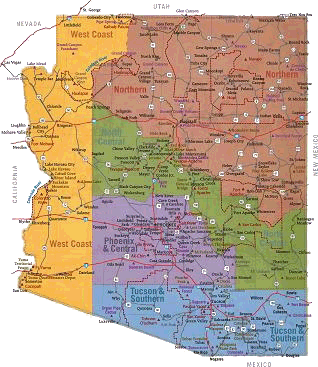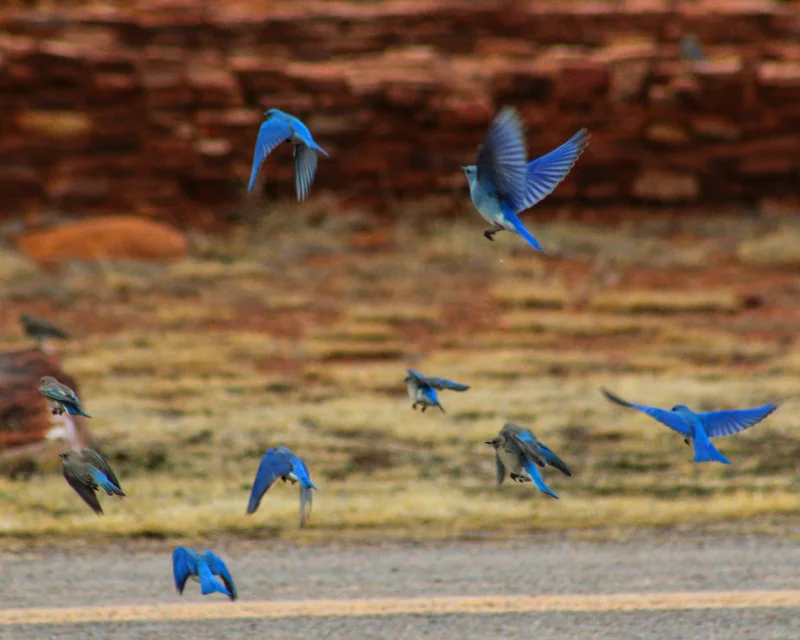Wildlife Viewing in June
Phoenix and Central Arizona
If spring is for the birders, then summertime is for “herp” fans and Arizona is the best of all states for snakes, lizards, frogs, toads, turtles and tortoises. In Maricopa County the park system offers interpretive tours and checklists for amateur herpetology enthusiasts who prefer to search solo.
San Tan Regional Mountain Park in the southeast valley has “Wildlife Encounters” nighttime walks at dusk and the promise of western diamondbacks or black-tailed rattlesnakes. Carry along one of the newer pocketsize black lights to see scorpions glow in the dark with their eerie greenish-yellow color.
Scorpion under black-light
Chuckwallas
After morning sun has warmed the boulders you’ll find chuckwallas basking at South Mountain Park. Summer programs are offered at other parks such as Usery (flashlight tours after dark), and Estrella Mountain Park have a great “Signs of Life” walk exploring den sites, scat and tracks. Bring your kids and try your own a variation of detective work: try to find scene-of-the-crime forensic evidence when fur, feathers or bones reveal where a predator met up with prey. The first of all cactus fruits are ready this month, look atop the saguaros for white-winged doves with their bills stained crimson red from ripe fruit.
Northern Arizona
Flock of Mountain bluebirds
In the pinyon-juniper forests look for black-throated gray warbler, juniper titmouse, blue-gray gnatcatcher, northern mockingbird, ash-throated and gray flycatchers, and scrub and pinyon jays as they claim territories and begin nesting. Nesting birds are quieter, concentrating on raising and protecting young – but early morning birdsong can help you spot parent birds hurriedly delivering food to hatchlings. Sky-blue mountain bluebirds flock in the high-elevation grasslands around Big Lake, Sheep Crossing and the West Fork of the Black River. Canada geese graze the wet meadows near the town of Alpine. Yellow-breasted chats reveal how they received their name with noisy outbursts from willow riparian habitats (again, visit the Wenima Wildlife Area). Both the western and occasional eastern meadowlarks sing at the Arizona Game and Fish Department’s White Mountain Grasslands Wildlife Area, their different vocalizations being quite apparent more so than their plumage variations that differentiate them.
Yellow-breasted Chat
Tucson and Southern Arizona
The hottest, driest month and bird activity quickly dwindles by mid-morning… so start waking before sunrise to celebrate the coming summer solstice (you’ll also enjoy the day’s coolest temperatures!). Late breeders like yellow-billed cuckoos, sulphur-bellied flycatchers and fivestriped sparrows arrive. High elevation forests are active with nesting Cordilleran flycatchers, olive warblers and many other montane species. Saguaro cacti fruit and attract scores of whitewinged doves and other desert birds. The Festival of the Hummingbirds is held in Tucson. Cliff chipmunks and antelope ground squirrels are fans of cactus fruit too, and you’ll find these industrious rodents scavenging fallen saguaro fruit. Antelope ground squirrels have distinct stripe, and are great to photograph and fun to observe scampering through those seemingly impenetrable cholla cacti.













